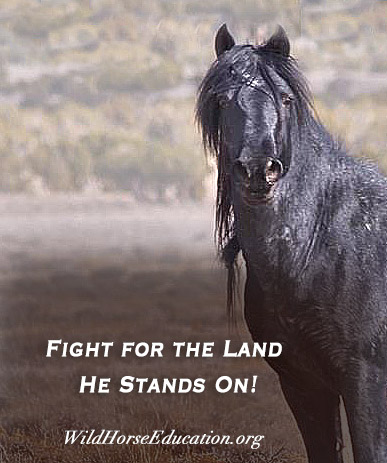
Wild Horse Education is the only organization to take inhumane treatment of wild horses to court. We repeatedly litigated until we won a humane handling policy. We have fought for the right of the public to observe roundups in a First Amendment case joined by 15 news organizations nationwide. Today our range documentation has stopped unjustified removals.
We are truly honored that the New Yorker, that has not published a story on wild horses in a long time, has featured wild horses at such a critical juncture in the history of the American West. Our wild horses are a public, protected, resource. Wild places and wild things are at the center of a political storm that may just usher in the largest changes to public land management since the Civil War.
“Our wild horses are the only animal in our nation literally defined not by what it is, but by the land it stands on. It’s legal definition ties any protection it has by where it’s hoof lands. The horse is the most vulnerable of all to changing politics. We are on the verge of losing our truly wild horses and the land they stand on. It will be gone before people even know it. Before people even know that they had it.”
~~~~~
The making of “The Wild Place” – a note from Laura Leigh
A few days before heading out to a roundup I got a call from a film maker, (I get lots of calls from people making movies on wild horses). The young man was personable and intelligent and he was not at all phased when I told him he needed to buy a plane ticket and be out the following week. I told him that the accommodations would be rough and internet dicey. Andrew Ellis simply said, “See ya there.”
He came with sleeping bag, yoga mat and camera equipment. He was drawn into wild horses through the prison training program where “inmate meets inmate” and the bond between man and horse is unmistakable. A video production Andrew is currently editing revolves around relationship between inmate and horse and is beautifully done. The displacement of the West is real; our natural environment and of people. I had no idea he was producing a stand alone on the range work, or me. I thought we were helping him with a segment for his other project.
We talked about so many things; my litigation, roundups and how the wild horse program works (or really how it doesn’t). On the road, day in and day out, you talk.
I was exhausted after doing daily reports, editing pictures and getting stories out. I was a bit depressed. I had been trying for years to get the focus off the same story of roundup, and into the conversation we need, land management. I had finally gotten a shower and was still a bit damp.
“Do you want the advocate, the lawyer in me, the range rat?” I asked as he told me to sit on the bed with his camera ready, “I have no idea which ‘me’ you want, I seem to never know which ‘me’ people want. I’m really tired, direct me.”
“I want just you. I want to know how you came to live like this. The person behind the face.”
“Give me a minute… I’ll try to remember.”
That was the interview that he chose to edit. It stops right before the part of the narrative that says “then I got breast cancer,” that for now I have beaten. Those that have followed the “million mile journey” know about our First Amendment fight, the fight to gain equity on the range, the fight to get a humane handling policy and where we stand today.
We are on the verge of losing our truly wild places and wild things. This range war has been moving for years to grab anything that represents a dollar figure; gold, silver, lithium, oil, gas, the grass that grows. and even the resumption of the slaughter of our mustangs for a dollar. Today there is nothing holding it back.
Wild horses are the tip of the iceberg of public land management. We hope you take the time to understand, and get involved, before it’s gone.
We are truly honored that the New Yorker, that has not published a story on wild horses since the 1950’s, has featured wild horses at such a critical juncture for public land.
Join us today to help fight for our wild things and wild places.
~~~~~
If you can, please help us fight for our wild horses and the land they stand on.
We have six months of protection against the “Bullet in the Head,” only six months. The budget brought us some time by maintaining the status quo. But the fight moves on. https://wildhorseeducation.org/2018/03/23/discussion-omnibus-budget-and-what-comes-next/
Our review of the book “Wild Horse Country,” that the author of the New Yorker article uses (instead of speaking to us). The print piece did not follow the agrement. You would not even know how to spell our founders name unless you read to the bottom. WHE is used as the “clickbait” to sell Dave’s book. We do not link to the New Yorker print piece. Read here and you will see why: https://wildhorseeducation.org/2017/10/10/wild-horse-country-not-really/
Please read our series on the public land seizure movement: https://wildhorseeducation.org/wild-wild-horses-and-the-public-land-seizure-movement/
If you really want to understand what just one of our roads are like in this fight read this amazing piece by Christopher Ketcham.
All The Pretty Horses Must Die, Christopher Ketcham (a glimpse into one of the roads we travel) https://www.thedailybeast.com/trumps-cowboy-allies-say-all-the-pretty-horses-must-die
Our mini resume: https://wildhorseeducation.org/milestones-of-whe-our-resume/

Categories: Lead, Wild Horse Education
You must be logged in to post a comment.